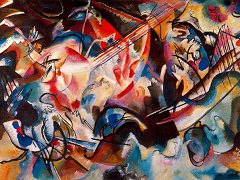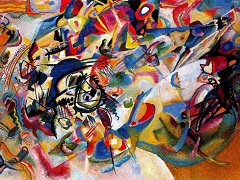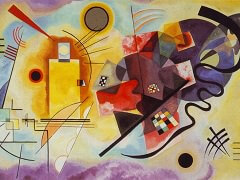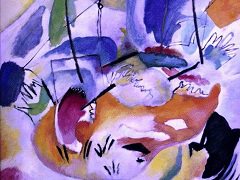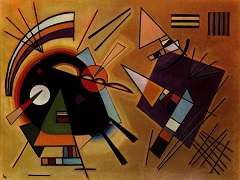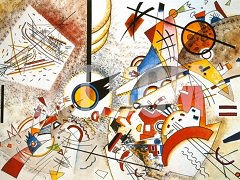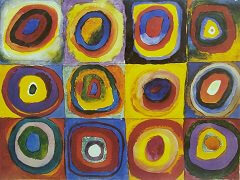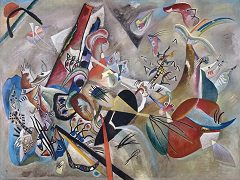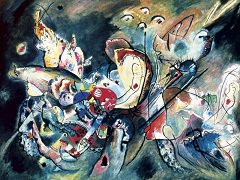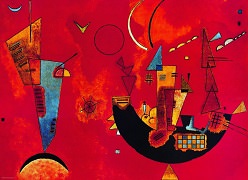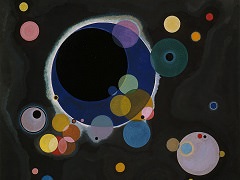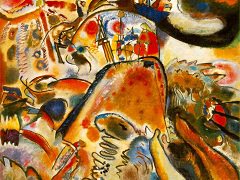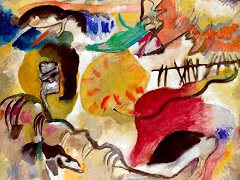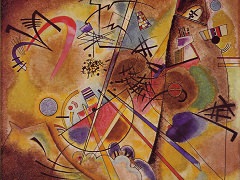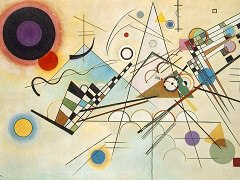Dunaberg, 1909 by Wassily Kandinsky
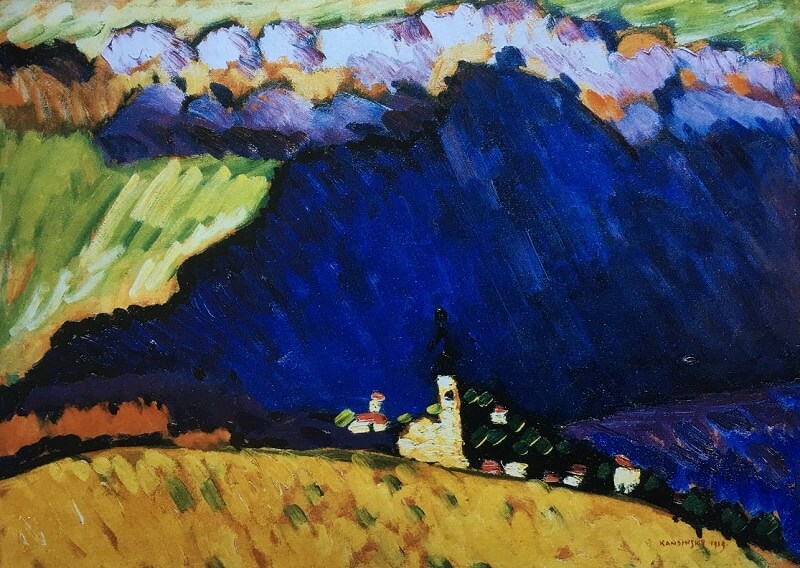
Set in the Bavarion Alps, Dunaberg and Murnau are places that Kandinsky frequented both in the winter and the summer, with his companion Gabriele Munter, to point. After his visit to Paris where he saw the work of Matisse and the other Fauve artists, his own palette become much brighter, with large areas of non-natural colours used simply to express form. This phase marks the start of Kandinsky's mature period in which his work is resolved and unlike any other artist's oeuvre. His paintings of this period, where the motif originated in nature, begin to move towards Abstraction. The viewer is still able to make out the church tower and the rooftops of the little houses in the town, but little else.
Kandinsky is growing in confidence with his use of colour to define form, and as he moves towards his seminal theoretical literary masterpiece Concerning the Spiritual in Art, there is evidence here that he is starting his experiments in juxtaposed colours, beginning with yellow and blue each being antithetical to the other, and as such, complementary,

